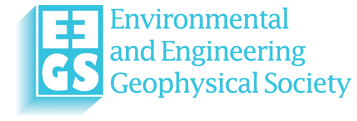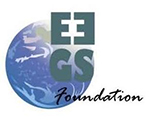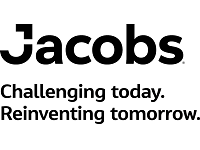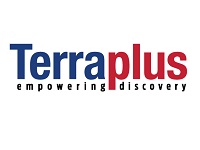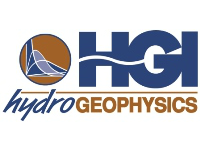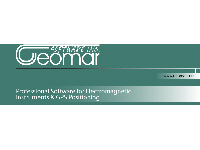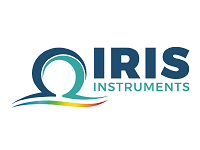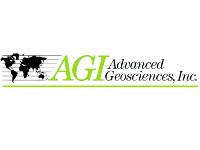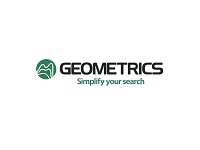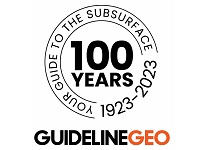SAGEEP 2022 Short Courses
Sunday March 20, 2022
Please Note: When registering for Short Courses, be aware that you can only sign up for 1 Short Course on Sunday and 1 Short Course on Thursday (or the two Half-Day short courses on Thursday) since Short Courses on the same day run simultaneously.
Full Day courses include morning and afternoon refreshment breaks and lunch.
Half-Day courses include one refreshment break, either morning or afternoon.
SC-1: Groundwater mapping and hydrogeological models from Airborne Electromagnetic (AEM) data
Instructor: Mats Gulbrandsen - I•GIS
Time: 8:00am - 5:00pm
Course Description:
Groundwater mapping and hydrogeological conceptual modelling using Airborne Electromagnetic (AEM) data is a “hot topic” – To mention one ongoing project, the Department of Water Resources in California is currently conducting AEM surveys throughout the state’s groundwater basins to assist local water managers in implementing the Sustainable Groundwater Management Act (SGMA). The Geoscience team at I•GIS has for more than 15 years been part of the Danish suite of technical solution providers within the field of groundwater modeling and has extensive expertise and experience in this area.
This one day “hands-on” short course goes through the practicalities of building a 3D conceptual model from scratch using AEM data together with other geoscientific data types by combining cross-sections, GIS maps and 3D visualization in the interpretation process. The focus is how to get the most out of your AEM data. In addition to the traditional manual modeling techniques, we will introduce and go through examples on how to utilize Machine Learning tools in the modeling process – including clustering algorithms and the Smart Interpretation method. We will also work with statistical methods and tools to evaluate and quality check the interpreted model with respect to the available data.
The course will be a combination of short lectures and exercises, and at the end of the day the participants will have touched base with the main principles behind building a hydro stratigraphic conceptual model.
For the exercises in the course, we will use the GeoScene3D software package. To be able to carry out the exercises, the course participants will get free access to the software during the course. The participants are required to bring their own laptops with a reasonable graphics card, see more on https://www.geoscene3d.com.
Thursday, March 24, 2022
SC-2: Ground Penetrating Radar - Principles, Practice and Processing
Instructor: Greg Johnston – Sensors & Software Inc.
Time: 8:00am - 12:00 noon
Room: Independence
Course Description:
Ground Penetrating Radar (GPR) is a non-invasive subsurface exploration technology that uses radio waves to image the subsurface, up to 100 meters in favorable conditions, to detect buried objects and boundaries. It has found widespread use in geology for mapping geological structure and stratigraphy as well as groundwater and mineral exploration. It is also commonly used for geotechnical surveys, environmental surveys, mine safety, forensics, archaeology, utility location, concrete inspection, snow thickness measurements and glaciology.
This course covers a bit of everything about ground-penetrating radar (GPR) including theory, GPR instrumentation, survey design, data collection, data processing and data interpretation. We discuss what causes GPR reflections and why some subsurface objects and boundaries are easy to detect while others are more difficult or impossible to detect with GPR.
We examine proper data collection techniques of Line Scans and Grids Scans and the value of collecting GPR data with an integrated GPS. Due to the short length of this course, Grid Scan data collection will be shown using short videos. Students will see GPR data plotted as cross sections, 2D depth slices, 3D volumes and displayed on Google Earth. During the software session, we will discuss the principles of interpreting GPR data and how to present GPR data effectively in scientific papers and reports. If time allows, we will finish with GPR case studies to expose students to data from other application areas.
SC-3: The Future of GPR Processing in the Cloud
Instructors: Jan Francke and Lisandro Martinez, Geolitix Inc.
Time: 1:00 - 5:00 pm
Room: Independence
Course Description:
GPR processing means many things to its varied users. For utilities mappers, a can of spray paint to mark out hyperbolas in the field is all that is required. For archeologists and surveyors, RTK GNSS-tracked large GPR arrays with careful processing and interpretation to produce detailed CAD maps is required.
GPR software has a reputation of onerous learning curves and has been slow to handle the multi-gigabyte datasets generated by large surveys. New cloud-based GPR software harnesses the power of distributed computing to enable near-instantaneous production of results, be they DXF pipes or highly detailed depth slices. New AI-driven hyperbola and horizon-detection algorithms allow for a semi-automated approach to target identification. The significant advantage of speed using massively parallel processing enables the user to fine-tune processing parameters using interactive sliders and dials with the entire dataset processed en masse and the results displayed instantaneously.
This workshop will teach both the basics of GPR processing as well as more advanced methods of filtering to extract the most useful data from each project. The workshop will use cloud computing software and attendees are asked to bring their own laptops to follow along with the provided datasets. We will also process and interpret any datasets provided by attendees.
Addressed will be topics such as:
• types and pitfalls of GPR data positioning
• global coordinate systems and their hidden risks
• integration of air photos and other geophysical datasets
• basic and advanced GPR processing
• interpretation of discrete, areal and horizon type GPR reflections
• creation of 3D geological models
• creation of 3D depth slices
• production of final reports, CAD files, GoogleEarth models, etc.
• what should and should not be included in GPR survey reports
SC-4: Practical MASW Methods: Basic to Cutting Edge
Instructor: Julian Ivanov, Kansas Geological Survey
Time: 8:00am - 5:00pm
Room: Mattie Silks
Course Description:
This one-day short course introduces the most important theoretical and practical aspects of the seismic multichannel analysis of surface waves (MASW) method by a principle from the research group that originally developed the methodology at the Kansas Geological Survey. Each student will be exposed to the most current approaches for using Rayleigh, Scholte, and Love surface waves for the estimations of 1D shear-wave velocity (Vs) vertical profiles to depths of a few tens of meters, extendable to 2D and 3D volumes. Various practical topics related to the MASW data acquisition and analysis will be covered, that can include the use of active and passive sources, optimum seismic-source distance and receiver spread-size determination for data acquisition and/or processing, dispersion-curve imaging using conventional and the high-resolution linear Radon transform (HRLRT), stitching/blending dispersion-curve images for optimizing horizontal resolution and maximum investigation depth fundamental- and higher- mode evaluations; inversion of surface-wave dispersion curves with the incorporation of 2D compressional-wave velocity (Vp), Poisson’s ratio, and density a-priori information; construction of 2D Vs and other-parameters images with topography and variable depth, etc. The use of Vs for earthquake-hazard site classification, Vs30, and standard penetration test (SPT) N can be discussed. Attendees will be provided software with a temporary license to use on their laptops during the short course to experience and evaluate the MASW analysis in class and options for practice with, once back at their office. The goal of the short course is to develop an understanding of and skill sets with the method sufficient that participants can confidently incorporate the MASW method in their work.
Optional short-course materials designed to enhance attendees’ experience in digital ($25) or hard-copy ($120) format can be obtained by pre-ordering at [email protected]. Only a digital version will be available for on-site or late registration at $35 per registrant.
SC-5: Both SC-2 and SC-3 will be offered as a full day session (two half-day courses) for a single, reduced rate. For Short Course prices, see Registration Information.
|
